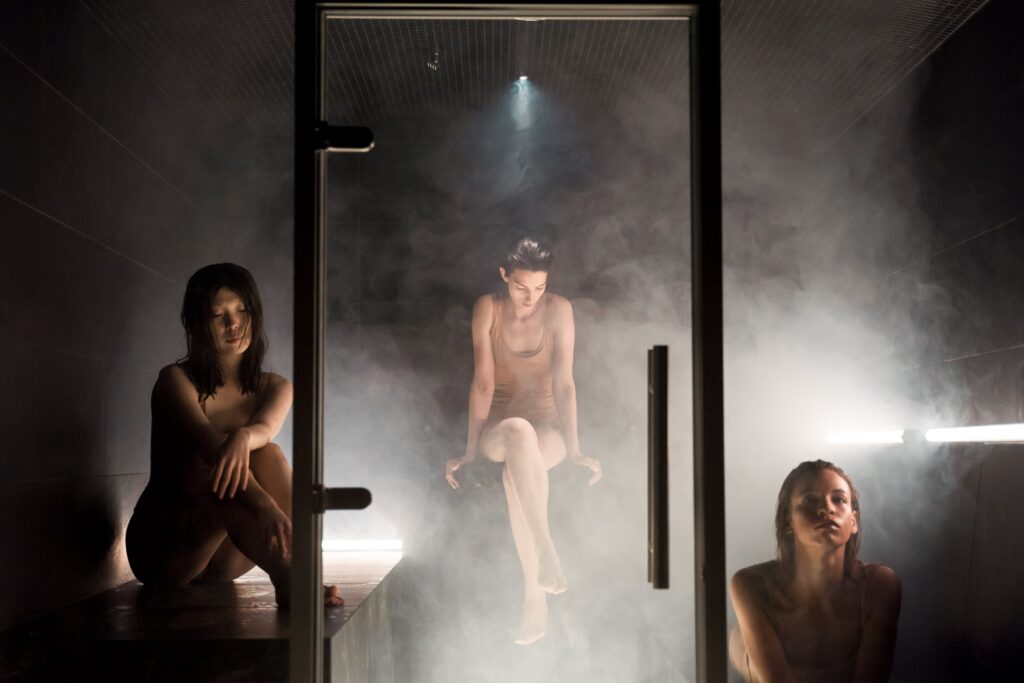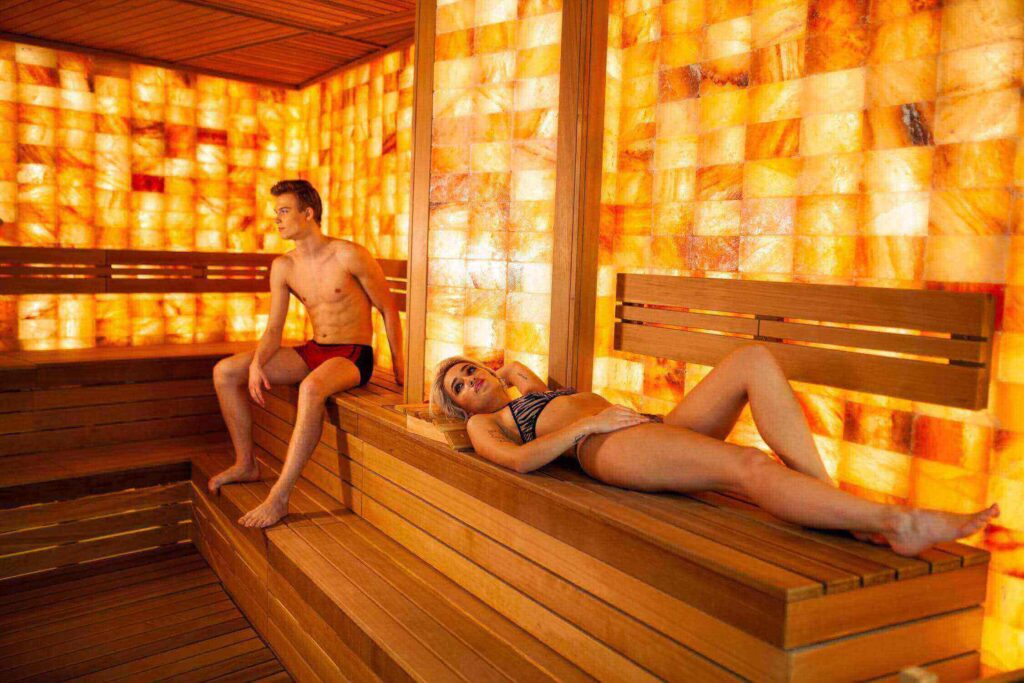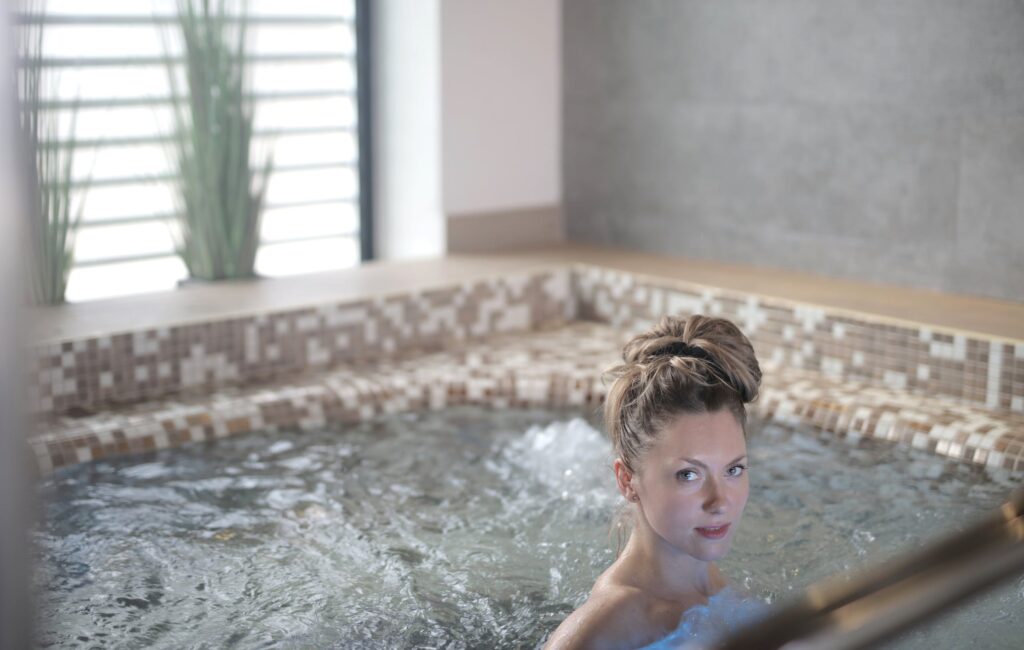You not only need to be aware of how much a steam room and sauna will set you back initially before making a decision on whether or not you will go through with the purchase. But how much will it cost monthly to operate a steam room and a sauna?
If you didn't have the money to keep the gas tank filled, you wouldn't get a car in the first place. You also shouldn't set up a sauna or a steam room before determining whether or not you have the financial means to use them.
The excellent news is that saunas and steam rooms demand almost any maintenance at all to keep them operating properly. As a result of this, maintaining a steam room and sauna can be accomplished at a fairly low cost.
It is easy to lose sight of the actual day-to-day costs of operating your sauna because the initial investment in purchasing and constructing a new home sauna can reach thousands of dollars. It is feasible to give you a sense of what your operating costs will be; however, you should be aware that the day-to-day costs will vary depending on the specific sauna you choose to use, the amount of time you spend using it, and the power rates in your area. Have a look at the Portable Sauna Melbourne options we have available to find a solution to your problem.
It will cost around 9 cents per session to operate a modest infrared sauna that is designed for two to three people. It will cost roughly sixteen cents per hour to operate a larger infrared sauna that can fit between four and six people.
It will cost around twenty-seven cents to power a 3 kW electric sauna heater that is used in a classic steam sauna that accommodates two to three people. It will cost around 27 cents to power an 8 kW heater that is used in a classic steam sauna that can accommodate four to six people.
The vast majority of people who own home saunas will think that these costs are insignificant, and about infrared saunas, they're probably correct. However, the expenses involved in running a heater in a conventional sauna are not something that can be ignored.
A heater with a capacity of 3 kW could cost you as little as $200 or as much as $900, depending on the quality of the unit. When you consider that using this sauna heater on a daily basis will result in an annual electric bill of almost $100, you will find that after 4 or 5 years, you will have paid more for the electricity than you did for the heater itself.
Because of this, you should focus at least as much, if not much more, of your effort on locating a heater that is not only effective but also the appropriate size for your sauna. Furthermore, it is worthwhile to make sure that your sauna is appropriately walled and that the doors close securely so that there is no heat loss while it is operating. This will allow you to get the most out of your sauna experience. Last but not least, you shouldn't get a sauna that's too big for your needs. Consider the fact that a sauna with a capacity of 300 cubic feet that calls for a heater with a capacity of 6 kW will run you twice as much as one with a capacity of 150 cubic feet that only requires a heater with a capacity of 3 kW.
FAQs About Sauna
Saunas trigger the production of collagen and other serums that help the skin. Sauna's exclusive benefits for the skin help you look younger. It lowers the aging process and eliminates wrinkles. So, if you want to look younger, adding sauna sessions to your skincare routine is a great idea.
Collagen the protein in our skin responsible for elasticity gets a healthy kick when you spend time in a sauna. The hot air combined with moisture enhances collagen production to help rejuvenate your complexion. The heat increase also allows your skin to shed dead skin cells and make way for new, healthier ones.
Take a warm shower just before your sauna session so you don't bring any dirt in. It also helps to open your pores and relax your muscles. But remember to dry completely off to sweat more quickly.
Saunas and steam rooms are both effective for cellulite because they help reduce fat and open your skin's pores. People often develop cellulite because fat, water, and toxins collect in their skin's subcutaneous layer. The heat in a sauna helps remove toxins from your body's fat tissues, including those with cellulite.
The warmth of the sauna and steam room boosts the effect of the hair conditioner by opening the hair cuticles for deeper penetration. But don't overdo it: protect your hair from excess heat with a towel or a sauna hat. Stress is known to have adverse effects on hair growth and your skin.
What Is An Infrared Sauna, And Why Is It Cheaper To Run Than A Steam Sauna?
People go inside saunas to take advantage of the dry heat, which helps to open their pores and relax their muscles. Saunas are small enclosures. Because saunas frequently achieve temperatures greater than 175 ° F (80 ° C), the walls and furniture in saunas are typically built of long-lasting wood, which, in contrast to metal or plastic, maintains a pleasant level of coolness throughout the duration of the sauna use.
In the past, people would build a wood fire behind a mound of rocks to heat their saunas. Traditional methods of heating saunas present a greater risk of suffocation and fire than do modern alternatives for heating saunas, which are now accessible. These modern alternatives for heating saunas are safer. Keep in mind that there are three ways in which heat can move from one location to another:
- convection (when heated liquids or gases rise to cooler locations) (when hot gases or liquids rise to cooler space)
- conduction (when a hot object comes in direct contact with a colder thing)
- radiation (when one thing gives off energy in the form of electromagnetic waves that are absorbed by other things, causing those other things to gain energy and eventually get heated)
All of these different pathways are used by fire to disperse heat. Infrared waves, on the other hand, are a type of electromagnetic wave that is part of the electromagnetic spectrum but cannot be seen by humans but can be felt as heat because it is radiated.
By the way, you have no reason to be concerned about the mention of radiation. The sort of radiation that does not produce ions is called non-ionizing radiation. This type of radiation is what allows us to see (through visible light waves), hear (via radio waves), and heat things by excitation of the atoms and molecules within the item into a state of greater energy. Ionizing radiation, such as gamma rays and X-rays, is powerful enough to change the composition of atoms and molecules. However, non-ionizing radiation, such as infrared heating, is not powerful enough to change the composition of atoms and
Why are infrared saunas so popular?
Traditionally, saunas work by first heating the air inside the room and then using that warm air to heat the individuals who are inside the room at the same time. The air in the sauna can be heated by infrared heating, just like it would be in a traditional sauna. However, it can also heat the individuals who are using the sauna directly, and as a result, the power requirements of an infrared sauna are likely to be lower than those of a traditional sauna. Are you looking for the Melbourne Sauna? Stop looking; Portable Sauna has got you covered in every way. Infrared heating is associated with a lower risk of injury compared to other types of heating. Traditional wood-burning fires in saunas pose a fire risk if the flames are not well controlled.
Furthermore, these fires need to be vented to avoid hazardous vapours from flooding the sauna and the rest of the house. In addition, there is a potential for a fire to start in a sauna that makes use of electric heating components if combustible items come into contact with the element. Sources of heat that are infrared
Infrared saunas designed for one or two people often work with normal 120-volt/15-amp grounded outlets, making it simple to set one up in one's house without having to make any alterations to the property's electrical infrastructure. Larger saunas and traditional saunas, which do not use infrared heat, typically have greater power ratings, necessitating the installation of modified outlets with increased voltage and amperage.
What will it cost to run an infrared sauna?
The wattage of the sauna, the amount that it is used, and the price of power in the location where it is used all play a role in the cost of maintaining a sauna. Divide the wattage of the sauna by the amount of time the sauna is on each month, and then add the price per kilowatt that is charged by the electric provider. This will give you the monthly energy expenditures for any sauna, whether it is a traditional sauna or an infrared sauna. This could also be written as:
Wattage equals the monthly cost (in kilowatts) of hours of use per month multiplied by the cost per kilowatt-hour of usage.
Wattage
In certain circumstances, infrared saunas have a smaller wattage than conventional saunas of a similar size. This is especially true for smaller infrared saunas that are designed for one or two persons. Even the smallest classic saunas tend to be 3.0-4.0 kW saunas, which require modified electrical outlets comparable to those used for washing machines and dryers. Infrared saunas for one to two people are typically designed with wattages lower than 1.6 kW and can be used in a standard 110-volt, 15-amp outlet. Traditional saunas, on the other hand, tend to be larger. Even if the length of time spent in the sauna and the cost of electricity remain the same, the use cost will increase proportionately if the wattage of the sauna is increased by the same factor of two or three, as shown in the preceding equation.
Time to heat sauna
It's possible that an infrared sauna and a traditional sauna of comparable size could have the same amount of wattage. However, when an infrared sauna is used to heat bodies without already directly heating all of the air in the sauna, the number of hours used in an infrared sauna per month is likely to be lower than the number of hours used in a conventional sauna per month. This is because the infrared sauna heats bodies rather than the air in the sauna. Instead of relying on one source of heat as a traditional sauna does, infrared saunas typically contain heaters that aim infrared waves directly at the bodies of users and surfaces that come into direct touch with people (such as the floor and benches). Therefore, turning on an infrared sauna may only take ten mins before it is ready to be used. On the other hand, a conventional sauna often needs at least half an hour and frequently an entire hour to reach temperatures at which it may be used. If a user wishes to devote a half-hour per day to their sauna, this indicates that their infrared sauna will be on for forty mins per day; however, their traditional sauna may be on for ninety mins per day, which will more than double the amount of money they spend on energy.
Costs for electricity
Users in areas where energy is already relatively expensive will be the ones who feel the impact of a doubling of prices more than those in areas where energy is relatively inexpensive. Kilowatt-hourly rates are what electric companies base their prices on (kWh). This price can be quite low in regions such as Idaho that rely solely on hydroelectric power, while in regions such as Hawaii that rely on crude oil imports, it can be rather high. The cost of electricity for consumers in the United States can range anywhere from 9 to 34 cents per kilowatt-hour, although the national average is somewhere around 12 cents.
When using an infrared sauna to immediately heat the body instead of heating the air in the sauna first, it is essential to keep in mind that the primary means by which one may bring down one's energy expenditures is by cutting down on the amount of time that the heater is in operation. Users of traditional saunas have a habit of turning the heater on 30–60 mins before entering the sauna to bring the air temperature up from the room temperature to the sauna temp (typically 160 to 210 degrees F, roughly 70 to 100 degrees C). It is possible that outdoor saunas used throughout the winter months will have to contend with temperatures below freezing, necessitating a lengthier heating time. Infrared saunas are utilized increasingly frequently indoors because of their ability to heat individuals in as little as ten mins effectively. Because of this, a person who uses an infrared sauna can get twice as much use out of their sauna for the same cost as someone who uses a traditional sauna.
Example costs calculations
Let's work through an example to figure out how much it would cost to operate a traditional sauna versus an infrared sauna for a period of one month. Let's say for the sake of argument that both saunas have a wattage rating of 6000. Because electricity consumption is typically expressed in kilowatts (kW), as was just indicated, we need to reduce the wattage by 1000 to get the wattage in kilowatts for the sauna. According to our illustration, 6 kW equals 6000 W divided by 1000.
The greater the amount of time spent in the sauna, the more noticeable the disparities in the operating costs of one sauna vs another will become. We will calculate the user's energy expenditures for both an infrared and a classic sauna using the example of the user who wishes to use their sauna for half an hour every day.
In the case of the infrared sauna, the sauna will be operational for a total of forty mins per day (10 min heating the sauna, and 30 min using it). That comes out to a total of 1200 mins over the course of a month with 30 days. The answer to this question is 20 hours if you divide 1200 mins by 60. Multiplying this number by the 6 kW that the sauna needs gives us the total monthly energy use of 120 kWh. To use the sauna for thirty mins each day at the rate of 0.12 dollars per kilowatt-hour multiplied by 120 kilowatt-hours would result in a monthly expense of $14.40 for the average consumer.
The traditional sauna will be open for a total of three hours and fifty-five mins each day (45 min heating the sauna, and 30 min using it). That comes out to a grand total of 2250 mins over the course of a month with 30 days. The answer to this question is 37.5 hours if you divide 2250 min by 60. When we multiply this number by the 6 kW that the sauna needs, we obtain 225 kWh as the amount of energy that is utilized each month. To use the sauna for thirty mins each day at the rate of 0.12 dollars per kilowatt-hour multiplied by 225 kilowatt-hours would result in a monthly cost of $27.00 for the average consumer.
In a location where the cost of electricity is higher, say $0.30 per kWh, using an infrared sauna in this manner would result in a monthly cost of $36.00, while using a typical sauna would result in a monthly cost of $67.50. The operating cost of an infrared sauna with a lower wattage that is suitable with conventional 110-volt outlets would be less than a third of the price of this model.
Installation cost
The expenses associated with installation will be strongly influenced by the type of sauna you purchase, the size of the sauna, and whether or not it requires hardwiring into the mains electricity or can be plugged into a suitable PowerPoint. It will also depend greatly on you - do you have the strength and additional help necessary to complete most of the installation and configuration yourself, or will you need to hire someone to handle the entire project from start to finish? It will be your decision to make in significant part. Expect to spend a minimum of $1,000 for the installation, but bear in mind that the larger the sauna, the more labour will be required to install it. Quotes can vary from area to region but plan on spending at least that much. We suggest that you look over our selection of saunas, settle on the kind that you want, and then get multiple quotations from the local tradespeople who can install it. Doing so will prevent you from being startled after you make your purchase. Also, check out the Portable Sauna Melbourne page, which includes all the information regarding Portable Saunas that you could possibly require.
Optional extras
Compare the features that your new infrared sauna will have and the features that it will not have to the ones you want to have in your sauna. There are some inexpensive ones on the market, and some of them don't even have a heating element. (however, if you ask us, that hardly qualifies as an "optional extra"!) Many amazing items on the market can significantly improve the quality of your time spent in the sauna. To get the most out of your time spent relaxing, it is important to keep in mind all of your senses — taste, hearing, touch, smell, and sight — and to seek out activities that constructively engage each of them.
Cost to run
Traditional saunas, which can be powered by either wood or electricity, typically have far higher operating costs than their infrared counterparts. To begin, they have a lower overall power consumption because they preferentially heat the surfaces rather than the air. However, because of this reason, the amount of time needed for preparation is significantly less. Compared to a traditional sauna, which can take up to an hour or more to reach "sweating" temps, an infrared sauna can be ready to use in less than half an hour. This means that you will end up using the sauna for a shorter period of time, which will also result in a reduction in the amount of money spent on sauna use.
The primary factor that will determine the cost of your electricity is the rate that you are charged per kilowatt-hour for the amount of energy that you consume under your existing electrical plan. On the other hand, you can figure out how much power an infrared sauna will need by looking at the energy needs it has and using it as a general reference. In the United States, the cost of operating a 1000-watt sauna for one hour will typically amount to one kilowatt-hour (kWh), which will set you back about 12 cents.
The energy efficiency of different saunas
Simply put, the generation of electricity results in the creation of more carbon dioxide than the production of gas does, which is why electric sauna warmers are less energy-efficient than analogous gas counterparts. However, as gas heaters are not as readily available, you may not have a large selection of alternatives to select from. The same is true with electric steam generators, which are typically seen in steam rooms. In terms of how they function, these are comparable to electric hot water tanks, which are renowned for being inefficient and are famously expensive to operate.
Depending on the origin of the wood, a heater made of wood could be more environmentally friendly than other options or could be worse for the ecology than other options. If it was produced using renewable resources, then the environmental impact was probably not that great. If this is not the case, then the opposite is true. Burning wood is an unavoidable activity that results in the generation of carbon dioxide. Check out Portable Sauna Melbourne, the industry leader in giving solutions to the issues you're having.
Far Infrared sauna heaters
Far infrared (FIR) sauna heaters are now the most effective type of sauna heaters that are commercially available. Despite the fact that it requires electricity, it warms up in a fraction of the time (about ten mins, as opposed to forty to sixty for a traditional sauna), and it does not spend any energy in heating the air because it warms you directly. Because it warms you up more quickly and makes you sweat more, the amount of time you spend using it is typically shorter; as a result, the session uses less power overall.
However, increased temperature settings and continued use will cause a rise in the amount of electricity consumed. Because you will require a greater overall temperature in a larger sauna to heat all of the sections in the sauna evenly, this may be something that cannot be avoided. Another consideration to consider is the level of performance offered by the FIR panels you select. It is highly recommended that you conduct some research to make sure that you are investing in energy-efficient infrared panels before making any purchases. FIR sauna panels that are both inexpensive and constructed poorly are likely to have much lower energy efficiency.
Both saunas and steam rooms are choices that require very little upkeep. Therefore, if you are searching for something to help you unwind and add a little bit of luxury to your house, without spending a lot of time or cost on upkeep, then a steam room or sauna may be the solution for you. Both of these features can be maintained with relatively little effort.
The monthly expense of maintaining a steam room and sauna will be quite considerable. However, this will change depending on a couple of different conditions. In addition, it is highly recommended that you calculate your typical operating costs by factoring in the dimensions of your stove, the cost per electrical unit, the duration time on average, and the number of days that the sauna or steam room will most likely be in use each month.
In addition to the monthly operating costs, you may also need to account for some other charges, such as the cost of routine maintenance and any potential parts for maintenance. In general, however, the costs of operating a sauna or steam room are significantly lower than the costs of maintaining them on an ongoing basis.
Conclusion
The cost of operating a steam room and sauna can vary depending on the specific sauna, the amount of time spent, and the power rates in the area. Heaters with a capacity of 3 kW can cost up to $900, so it is important to choose a heater that is effective and the appropriate size for your sauna. Infrared saunas are popular due to their lower power requirements and lower risk of injury compared to traditional wood-burning fires. The cost of running an infrared sauna is determined by the wattage of the sauna, the amount of time it is used, and the price of power in the location where it is used. Wattage is the monthly cost multiplied by the cost per kilowatt-hour of usage.
An infrared sauna heats bodies rather than the air in the sauna, reducing the number of hours used per month and increasing the amount of money spent on energy. Cutting down on the amount of time the heater is in operation is the primary way to reduce energy expenditures. An infrared sauna with a lower wattage that is suitable with conventional 110-volt outlets would cost less than a third of the cost of a traditional sauna. The cost of installing a sauna will depend on the type of sauna, size of the sauna, and whether or not it requires hardwiring. Traditional saunas have higher operating costs than infrared saunas due to their lower overall power consumption and shorter preparation time, resulting in a reduced amount of money spent on sauna use. Far infrared (FIR) sauna heaters are the most effective type of sauna, but increased temperature settings and continued use can cause a rise in electricity consumption.
Content Summary
- You not only need to be aware of how much a steam room and sauna will set you back initially before making a decision on whether or not you will go through with the purchase.
- You also shouldn't set up a sauna or a steam room before determining whether or not you have the financial means to use them.
- It is feasible to give you a sense of what your operating costs will be; however, you should be aware that the day-to-day costs will vary depending on the specific sauna you choose to use, the amount of time you spend using it, and the power rates in your area.
- A heater with a capacity of 3 kW could cost you as little as $200 or as much as $900, depending on the quality of the unit.
- Because of this, you should focus at least as much, if not much more, of your effort on locating a heater that is not only effective but also the appropriate size for your sauna.
- Last but not least, you shouldn't get a sauna that's too big for your needs.
- Consider the fact that a sauna with a capacity of 300 cubic feet that calls for a heater with a capacity of 6 kW will run you twice as much as one with a capacity of 150 cubic feet that only requires a heater with a capacity of 3 kW.What Is An Infrared Sauna, And Why Is It Cheaper To Run Than A Steam Sauna?People go inside saunas to take advantage of the dry heat, which helps to open their pores and relax their muscles.
- These modern alternatives for heating saunas are safer.
- By the way, you have no reason to be concerned about the mention of radiation.
- However, non-ionizing radiation, such as infrared heating, is not powerful enough to change the composition of atoms andWhy are infrared saunas so popular?Traditionally, saunas work by first heating the air inside the room and then using that warm air to heat the individuals who are inside the room at the same time.
- The air in the sauna can be heated by infrared heating, just like it would be in a traditional sauna.
- However, it can also heat the individuals who are using the sauna directly, and as a result, the power requirements of an infrared sauna are likely to be lower than those of a traditional sauna.
- Are you looking for the Melbourne Sauna?
- In addition, there is a potential for a fire to start in a sauna that makes use of electric heating components if combustible items come into contact with the element.
- What will it cost to run an infrared sauna?The wattage of the sauna, the amount that it is used, and the price of power in the location where it is used all play a role in the cost of maintaining a sauna.
- This will give you the monthly energy expenditures for any sauna, whether it is a traditional sauna or an infrared sauna.
- Even if the length of time spent in the sauna and the cost of electricity remain the same, the use cost will increase proportionately if the wattage of the sauna is increased by the same factor of two or three, as shown in the preceding equation.
- It's possible that an infrared sauna and a traditional sauna of comparable size could have the same amount of wattage.
- However, when an infrared sauna is used to heat bodies without already directly heating all of the air in the sauna, the number of hours used in an infrared sauna per month is likely to be lower than the number of hours used in a conventional sauna per month.
- This is because the infrared sauna heats bodies rather than the air in the sauna.
- Therefore, turning on an infrared sauna may only take ten mins before it is ready to be used.
- If a user wishes to devote a half-hour per day to their sauna, this indicates that their infrared sauna will be on for forty mins per day; however, their traditional sauna may be on for ninety mins per day, which will more than double the amount of money they spend on energy.
- Costs for electricityUsers in areas where energy is already relatively expensive will be the ones who feel the impact of a doubling of prices more than those in areas where energy is relatively inexpensive.
- The cost of electricity for consumers in the United States can range anywhere from 9 to 34 cents per kilowatt-hour, although the national average is somewhere around 12 cents.
- When using an infrared sauna to immediately heat the body instead of heating the air in the sauna first, it is essential to keep in mind that the primary means by which one may bring down one's energy expenditures is by cutting down on the amount of time that the heater is in operation.
- Users of traditional saunas have a habit of turning the heater on 30–60 mins before entering the sauna to bring the air temperature up from the room temperature to the sauna temp (typically 160 to 210 degrees F, roughly 70 to 100 degrees C).
- Because of this, a person who uses an infrared sauna can get twice as much use out of their sauna for the same cost as someone who uses a traditional sauna.
- Example costs calculationsLet's work through an example to figure out how much it would cost to operate a traditional sauna versus an infrared sauna for a period of one month.
- We will calculate the user's energy expenditures for both an infrared and a classic sauna using the example of the user who wishes to use their sauna for half an hour every day.
- In the case of the infrared sauna, the sauna will be operational for a total of forty mins per day (10 min heating the sauna, and 30 min using it).
- That comes out to a total of 1200 mins over the course of a month with 30 days.
- Multiplying this number by the 6 kW that the sauna needs gives us the total monthly energy use of 120 kWh.
- To use the sauna for thirty mins each day at the rate of 0.12 dollars per kilowatt-hour multiplied by 120 kilowatt-hours would result in a monthly expense of $14.40 for the average consumer.
- The traditional sauna will be open for a total of three hours and fifty-five mins each day (45 min heating the sauna, and 30 min using it).
- When we multiply this number by the 6 kW that the sauna needs, we obtain 225 kWh as the amount of energy that is utilized each month.
- To use the sauna for thirty mins each day at the rate of 0.12 dollars per kilowatt-hour multiplied by 225 kilowatt-hours would result in a monthly cost of $27.00 for the average consumer.
- The operating cost of an infrared sauna with a lower wattage that is suitable with conventional 110-volt outlets would be less than a third of the price of this model.
- Installation cost
- The expenses associated with installation will be strongly influenced by the type of sauna you purchase, the size of the sauna, and whether or not it requires hardwiring into the mains electricity or can be plugged into a suitable PowerPoint.
- Expect to spend a minimum of $1,000 for the installation, but bear in mind that the larger the sauna, the more labour will be required to install it.
- Optional extrasCompare the features that your new infrared sauna will have and the features that it will not have to the ones you want to have in your sauna.
- Many amazing items on the market can significantly improve the quality of your time spent in the sauna.
- The primary factor that will determine the cost of your electricity is the rate that you are charged per kilowatt-hour for the amount of energy that you consume under your existing electrical plan.
- On the other hand, you can figure out how much power an infrared sauna will need by looking at the energy needs it has and using it as a general reference.
- Far infrared (FIR) sauna heaters are now the most effective type of sauna heaters that are commercially available.
- The monthly expense of maintaining a steam room and sauna will be quite considerable.
- In general, however, the costs of operating a sauna or steam room are significantly lower than the costs of maintaining them on an ongoing basis.






